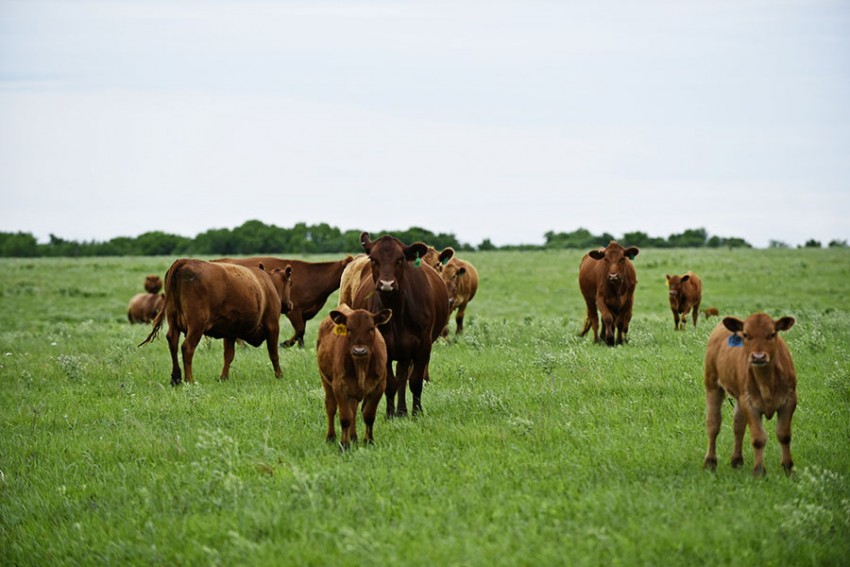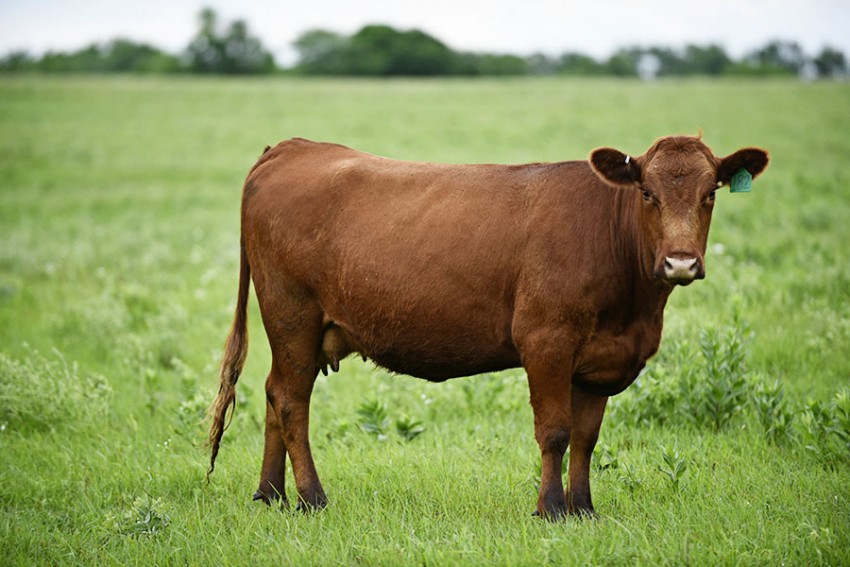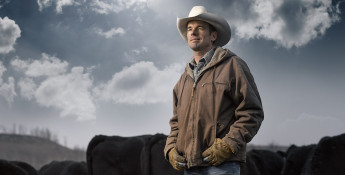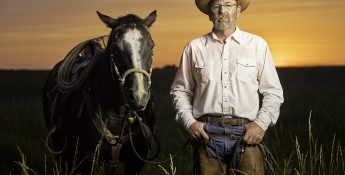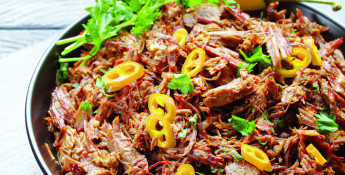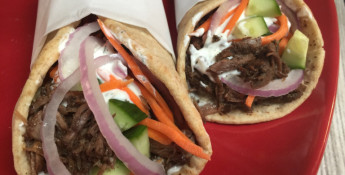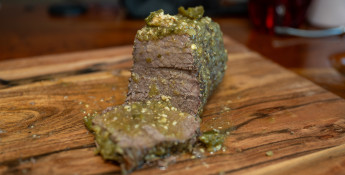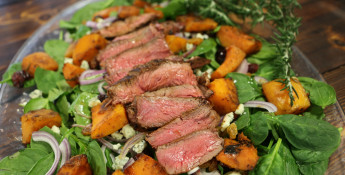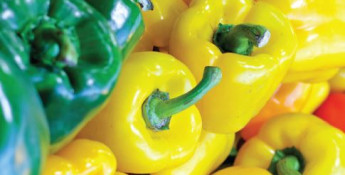By Rick McNary on May 31, 2016
Home-grown beef
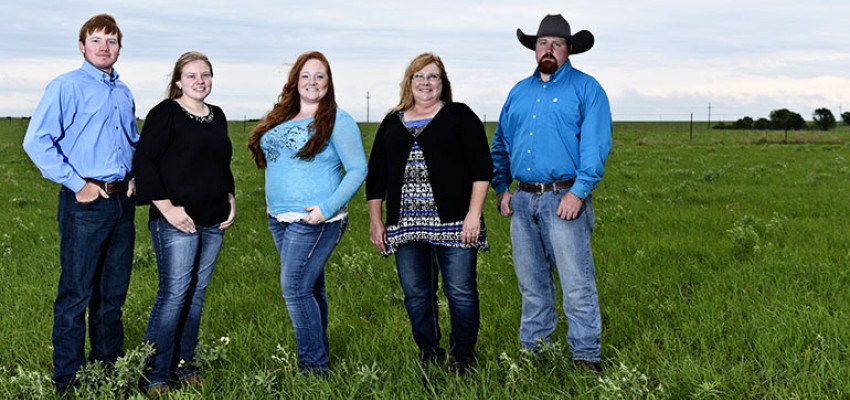
Satchel Creek Steaks began in 2001 the same way the Satchel Creek Ranch was acquired in 1984: old-fashioned bartering.
“I learned bartering from my parents who owned cattle ranches in Colorado and farms in Kansas,” Tiya Tonn-Oppold, owner and operator, says. “But Dad wanted his operations in one state so they traded for the Satchel Creek Ranch near Rosalia. Then one day I was telling our optometrist about our cattle and we soon started bartering eye glasses for beef. Later, his assistant asked if she could buy some from us, and Satchel Creeks Steaks became a business.”
The business grew over time as consumers became more interested in locally grown food and grass-fed beef. Although the national rate of beef consumption has decreased slightly, according to USA reports, there is steady growth in farmers and ranchers participating in local food systems. To encourage that growth, the USDA has developed several Know Your Farmer, Know Your Food programs.
“I’m convinced that God made the Flint Hills because he loves people so much that he wants them to have the best beef possible,” Tiya says. “The prairie grasses are some of the sweetest in the world and the reason why our beef tastes so good. We do a lot of things to improve our herd, but you just can’t beat the native grasses.”
Although Tiya grew up on a cattle ranch, the idea of marketing custom-cut meat was new to her. Therefore, she chose to use Krehbiels Specialty Meats in McPherson to process the beef because of their wide range of USDA certified recipes.
Satchel Creek Steaks has learned that direct-to-consumer (DTC) business is the most successful, although their meats can be purchased in different restaurants and retail locations. USDA research also indicates the DTC model produces the highest return-on-investment (ROI) for those selling products in local food systems.
“I’ve discovered there are two different buyers of our meat,” she says. “One is the man grilling at home or tailgating at football games and the other is the mom who wants good, lean hamburger to feed the family and stretch the budget.
“Sometimes, women think I’m lying when I tell them they don’t have to drain the hamburger after they brown it,” Tiya says. “I tell them if they have to drain it, they can bring the receipt back to me and I’ll refund their purchase. I grew up on this kind of lean beef and didn’t know until a high school Home Ec. class that some hamburger leaves such a mess in the pan.”
She prefers purebred Hereford cows because of her familiarity with the breed her parents raised. The cows are bred with purebred Angus bulls which produce an F1 (first filial generation) calf, a genetic term that refers to the offspring of mixture of two purebreds. Satchel Creek Steaks come from the F1 line.
“I like the disposition of the Hereford mommas,” Tiya says. “There are two things I will not tolerate on the ranch--a hot-tempered bull and a high-headed heifer. We run this ranch as a family so if a cow or bull takes someone out, it’s either me or one of my kids.
“Cattle are like athletes; they all mature at different rates. Just like two brothers in the same family grow up differently, cattle finish at different rates. Our cattle aren’t penned up in a stall; instead, they roam with their buddies and compete to see who can eat the most. However, we watch that closely because we don’t like a lot of extra fat on our meat, just enough to produce the right amount of marbling.”
According to the Kansas Farm Bureau Beef Fun Facts, beef is the number one food source for protein, vitamin B12 and zinc. The average American consumes 54.3 pounds of beef each year.
“The first bite of meat my children took was our beef; they’ve grown up on Satchel Creek meat. Three out of the four have gone to college on athletic scholarships.”
Her eldest son, Ty, focused on agricultural studies in college and, after graduating, returned to the ranch to run the day-to-day operations.
“My hat is off to him. He keeps the ranch running these days, working round-the-clock. I am blessed to have a strong transition plan moving forward with my son. I loved raising my kids on the ranch and would love for them join me,” she says.
“But before that can happen, I have four conditions: First, they have to move out on their own; second, they have to work for someone else besides Mom; third, they can’t feel obligated to come back because Mom needs help; and fourth, I expect them to work hard. My parents worked hard, I work hard and they work hard.”
Tiya’s experience as Satchel Creek’s CEO is aided by her law degree and real estate license. The recent census indicates that only 14.1 percent of farms in the U.S. have a female as a principal operator.
“Although they don’t admit it, bankers would rather talk to a man about ranching operations than they would a woman,” Tiya says. “I studied law and real estate so I’d know what I was talking about. I’ve also worked with lawyers to make sure the ranch is passed on wisely to my children.”
She also has experience in agricultural broadcasting and believes that people in agricultural need to tell their story more.
“We as farmers and ranchers, are so busy producing that, at the end of the day, the last thing we want is another job to do. We used to believe that telling the story was the job of our association or industry, but that’s not the case anymore. We all need to tell our own story.”
The story of Satchel Creek Steaks is that of many farms and ranches: adapting old-fashioned business principles to compete in an ever-changing economy. Perhaps in no other sector of the world’s economy does the light of entrepreneurial creativity shine brighter than on the farms and ranches in America.
Want to learn more about beef? Visit these pages:
Looking for tasty beef recipes? Try these!

